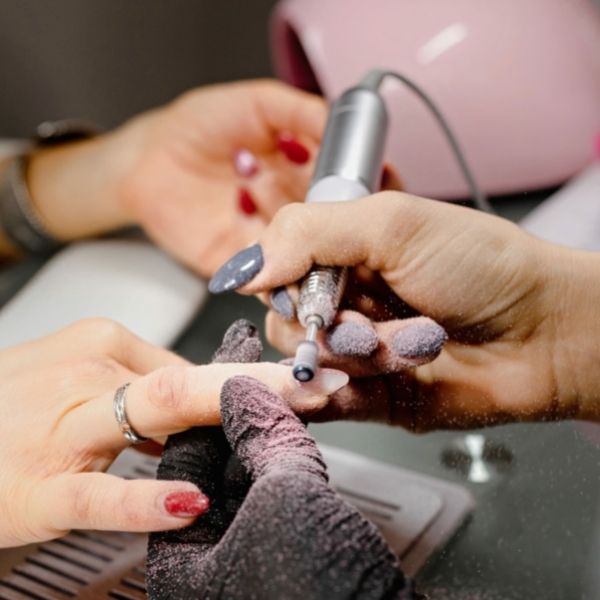Anyone who does their nails consistently knows the struggle of deciding between acrylics and gel nails. The problem is that not everyone knows the differences, and they are far from interchangeable. So to help you out for your next spa day, here are the pros and cons of gel and acrylic nails.
Gels vs. Acrylics
Acrylic nails involve roughening up the surface of your nail to place adhesive on your nail bed. The nail tech will then mold a liquid monomer and powder polymer to give your nail length and varied shape. Acrylics cure when exposed to the air, and you can remove them by soaking them in acetone for 20 minutes.
With gel nails, there are two types: soft and hard gel. Hard gels require a protein bond and a base coat before molding a nail. You need to place them under a UV lamp to harden, and you can’t remove them with acetone.
Soft gel nails come in many hybrid forms with base, color, and top coat all in one. This polish protects the nail rather than providing length. In addition, these polishes have a much more liquid consistency. Like hard gel nails, you must cure them with UV, and you can’t lift them with acetone.
Acrylic: Pros and Cons
The process of acrylic nail application consists of filing the nail bed, which damages the nail by making scuffs. If you or the nail tech don’t clean the nails and applicator properly, this can quickly become a hotbed of bacteria and can lead to infection or even nail loss. In addition, the 20-minute soak to remove the nails can cause even more cracking and dryness.
However, the application of acrylics costs much less, and if done correctly, you don’t have to worry about infection at all. Plus, acrylics are durable and can last longer than any other nail application, meaning you don’t have to spend your money getting a new manicure every few weeks.
Gel: Pros and Cons
Gel nail polish costs much more than acrylics, and, unfortunately, they don’t last long. Couple this with the fact that the process of getting them off is lengthy. You have to cut and file your nails down, soak them in acetone, and wrap them in foil. Also, you must repeat this process until the nail comes off, or you risk damaging the nail bed.
However, these are some of the only polishes that can protect your nails due to the trapping of moisture and protective coating application. Also, manufacturers are coming out with all-natural gel polish to mitigate dryness and irritation to the cuticle.
Much like everything else, there will be certain positives and negatives with every polish and nail application. Ultimately, you should choose the manicure that best suits your needs. Now that you know the pros and cons of gel and acrylic nails, you can decide which manicure is right for you.

